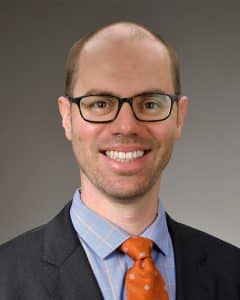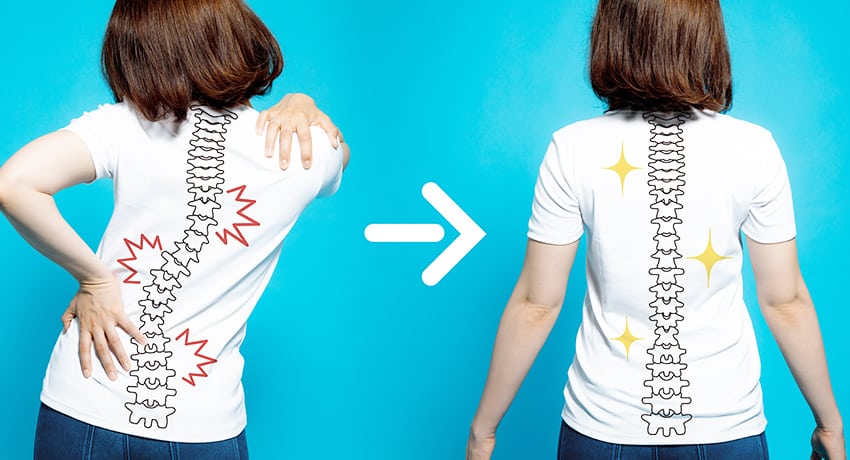Scoliosis – we’ve all been screened for it at some point in our childhood, but what do we really know about it? Apart from the immediate connection to back braces, there’s a lot of mystery to this very common diagnosis.

What is scoliosis?
Scoliosis is a spinal condition that when seen on an X-ray presents itself as a “C” or “S” curvature, instead of the expected straight line. “Most commonly, this is a condition that comes around during adolescence. As children are hitting their peak growth spurt, the condition can get worse and the curves can become bigger as they grow,” said Timothy C. Borden, MD, UT Physicians pediatric orthopedic and scoliosis surgeon and assistant professor in the Department of Orthopedic Surgery at McGovern Medical School at UTHealth.
This painless disorder is first screened by a forward bending test. In cases of scoliosis, when a child bends forward with their legs together and knees straight, a physician will either see waist asymmetry or a prominent outline of the ribs on one side of the body.
From there, an X-ray is done to determine whether scoliosis is actually present. The physician looks for the “C” or “S” curve greater than 10 degrees to make an official diagnosis.
What are the treatment options?
Contrary to popular belief, someone with scoliosis isn’t automatically given a brace to wear. Many cases only require observation to ensure no long-term issues will develop with the spine.
Those who do need a brace, do not need to worry about the comical bulky contraption that is usually seen on television. Most braces nowadays are custom-fitted and worn under the clothes. When worn properly, they stop the scoliosis from worsening in over 90% of cases.
Only a small percentage of patients require surgery, and it is typically performed when a brace does not help improve the curvature of the spine or when the condition is discovered too late to treat with a brace.
“Surgery involves the placement of rods and screws into the spine to help straighten it and that helps to prevent greater problems from developing down the line,” said Borden.
Misconceptions about scoliosis
One of the biggest misconceptions about the development of this condition is that a patient did something to cause or develop it over time. In the majority of cases, scoliosis results from an indeterminable cause. A person can’t get it from carrying heavy items, playing sports, or even by having poor posture.
Another misconception revolves around back braces. Many people believe that a child who wears a brace cannot participate in sports. However, children with scoliosis can still do the same activities as they did before their diagnosis. Back braces can be taken off and put on as needed.
Importance of screenings
Early detection is extremely important to avoid the need for a brace or surgery. If you are concerned that your child may have scoliosis, it’s best to schedule a screening by a pediatric orthopedic surgeon who specializes in the condition. The pediatric scoliosis team at UT Physicians specializes in cutting-edge, comprehensive care that is customized to a child’s needs.
Ignoring a diagnosis or avoiding a screening can hinder a person’s quality of life as they age. “What we worry about is not necessarily in your teens or twenties, but later on in life when a person’s spinal curvature can get really bad. In those situations, we can expect a patient to experience difficulty breathing, back pain, and mobility issues,” said Borden.


